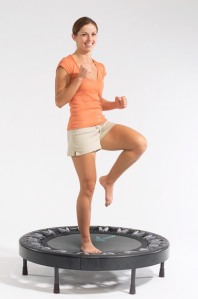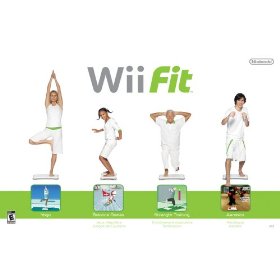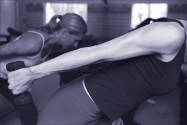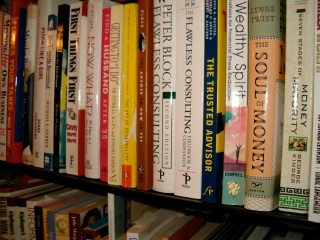Archive for the ‘Books’ Category
Why Tasks Hang On – Three Productivity Traps to Avoid
Take a look at your to-do list. Are there things that have been lurking there for weeks, maybe months? How do you feel when you think of those tenacious tasks? Tired? Discouraged?
You can get rid of those “Velcro jobs” faster if you know how they got to be clinging to your days in the first place.
There are three common reasons that tasks hang on.
1. As my father said, “You can always think of more things to do in a day than you can get done.” Expecting yourself to accomplish everything that enters your mind just isn’t realistic.
To avoid this trap, observe how long various tasks actually take. Try scheduling tasks in your calendar to give yourself a more realistic benchmark. If I have 10 hours of work to do, but only six hours available, something is going to go undone, at least for today. Recognize that on days when your calendar is full of appointments, you probably won’t be able to accomplish a lot of other work. Be realistic in your expectations.
And if a task is non-essential, give it an expiration date. This prevents jobs from dragging on indefinitely.
As the philosopher William James observed, “there is nothing more fatiguing than the eternal hanging on of an uncompleted task.”
I find that because I dream up new ideas nearly every day, I often have assigned more jobs to myself than I could ever possibly finish. If I haven’t written that non-essential proposal or made that call within the deadline, I’ve learned to delete it. If it’s really important to me, it will come back again. For now, I’ll actually be more productive if I just let it go.
2. In his book The Procrastinator’s Digest, a Concise Guide to Solving the Procrastination Puzzle, Timothy Pychyl, PhD defines procrastination as “a needless voluntary delay.” Procrastination is a terrible productivity trap that keeps tasks hanging on, usually the least pleasant ones.
One strategy Dr. Pychyl recommends for moving past procrastination is to understand the costs of our procrastination and the benefits of acting without delay. Each day, do the least palatable job first. Then, the rest of the day looks brighter, and you are unburdened by the costs of procrastination on those unpleasant jobs.
3. If your goals and objectives aren’t clear, there’s no good way to know which tasks are most important. When everything looks like it has equal weight, important things are bound to drag on.
As I teach in my Plan to Thrive workshop, the solution is to make a clear and compelling plan that really suits you and your business. This will help you sort out the really essential jobs from the “nice-to-have” ones.
Did you know that people routinely over-estimate what they can accomplish in one year, and also wildly under-estimate what they can do in three to five years? Think about it: if you’re like most people, what you’re doing today is something you could hardly have dreamed of just a few years ago. A clear and compelling plan can help you to be both realistic and ambitious about the tasks you really want to accomplish.
What do you want to brush off your task list? Declare it by leaving a comment here.
Want Greater Productivity? Walk This Way.
 I’ve written before about ways to exercise when it seems hard to include exercise in your schedule. There’s another tool that I recently suggested to a client who wants to do a lot of exercise with no down-time. It’s a Steelcase desk called the Walkstation.
I’ve written before about ways to exercise when it seems hard to include exercise in your schedule. There’s another tool that I recently suggested to a client who wants to do a lot of exercise with no down-time. It’s a Steelcase desk called the Walkstation.
The Walkstation’s basic structure is a treadmill that operates at low speeds — 1 to 2 miles per hour — with a standing desk attached. The treadmill has a longer deck than normal to allow plenty of room for the desk in front, and a motor that is able to withstand the constant use at low speeds that would burn out the average exercise treadmill.
The science on these walking desks is consistent and solid (original research on the Walkstation was done at Mayo Clinic). The test subjects who got the Walkstations didn’t want to give them back when the tests were over.
Our brains work better after exercise, but even better still while exercising. Our bodies are made to walk all day. (Note: for a compelling and entertaining recap of the research on how exercise boosts brain power, see John Medina’s book Brain Rules.) Walking two hours per day, burning 100 calories per hour, weight loss is pretty much guaranteed. It’s not hard to talk while walking at low speeds; my client reports that learning to type while moving comes quickly, too.
If the $4,200 price tag slows you down, there are a few websites with instructions on how to make a treadmill desk yourself using a standard treadmill, though it’s not entirely easy. It requires a good-quality machine whose motor can withstand the slow-speed use. Also, the treadmill must have level arms to hold the laptop – again, not easy to find. Getting the height right to avoid arm, neck, and back strain can be tricky. The desk must be stable enough so that your computer never meets the treadmill in a fall. Also, the treadmill requires a longer than normal deck to accommodate the laptop, so you don’t fall off the back.
My client is loving the results. What do you think? Would you like to use a treadmill desk? Leave a comment here.
How Pareto’s Principle can turn 20 percent of your effort into 80 percent of your results
Allow me to introduce someone who can profoundly affect your productivity. You may know him by his reputation, if not by his name or face.
Name: Vilfredo Pareto.
Claim to fame: formulated/discovered the Pareto Principle, also known as the “80/20 Rule.”
Pareto was an Italian economist who first observed that in developed economies, about 80 percent of the wealth was owned by 20 percent of the population. Additionally (and to simplify quite a lot) Pareto noted a consistent, predictable imbalance between inputs and outputs.
Relatively little was made of this discovery for many decades after Pareto published it. Still, other applications of Pareto’s discovery cropped up in odd places.
For example, most people find that they wear about 20 percent of their clothes 80 percent of the time. When carpeting is replaced in public areas, about 80 percent of it was still perfectly sound; only 20 percent was seriously worn. Many business owners find that 80 percent of their sales come from 20 percent of their customers. And 80 percent of their complaints come from 20 percent of their customers, too — but not the same 20 percent that accounts for the sales.
Pareto’s discovery was astonishing to him and to us because it runs counter to some of our basic beliefs about how the world works. We tend to believe that all actions have proportionate results. We behave as though all of our efforts are of equal importance, as though everything on our task list had equal weight. We behave as though Pareto’s Principle didn’t apply to us.
How can we use this 80/20 Rule to work for us? Recognize that the majority of what we do in a typical work day will have little impact while a small minority will have a major impact. Begin by identifying those things that are likely to make a real difference. Do those things first. Devote your best time of the day to making progress on the 20 percent of your activities that will likely yield 80 percent of your results.
Know where your revenues come from — which customers and which of your products — and focus your attention there. Let go of marginal (or unprofitable) activities. Be strategic in your use of all resources — time, capital, other people’s help, everything you’ve got.
Remember, it’s not the busiest person who wins, but the one who works most effectively. Use the 80/20 Rule to focus your energies on the activities that matter.
If you’d like to dig more deeply into how Pareto’s Principle can transform your life, pick up The 80/20 Principle: The Secret to Success by Achieving More with Less by Richard Koch.
How to Get Clients Now
Getting more clients is crucial for nearly every small business owner. Are you frustrated because the clients just aren’t coming?
Help is here, now.

This summer, doing a small part to move our economy forward, I am giving away just 20 places in the “How to Get Clients Now” teleclass.
In my two-part teleclass, I will train you to use the Get Clients Now system at no charge.
Get Clients Now is based on the book by master coach C. J. Hayden. (Maybe you’ve already got the book on your shelf, but you haven’t yet put it to work.) I am a licensed Get Clients Now facilitator, and I regularly lead Get Clients Now programs for small business owners.
In this teleclass, I will train you to use the tools in the Get Clients Now program. These are tools that are custom-made for your business, tools you can use again and again.
The two-part class meets at 3 pm Pacific time, 6 pm Eastern this Friday, June 19, and next Friday, June 26.
To join me for this special opportunity, please contact me with your name and email address. (I require these in order to send you the materials you need to participate in this valuable class. Of course I respect your privacy and will never trade, use, or sell your personal information.)
Please come fresh and ready to work. This two-part class is a $100 value, but it can be yours without charge if you act now.
I look forward to helping you Get Clients Now.
Questions? Contact me or leave a comment here.
Kaizen: solve small problems
There are many instances when we must solve large problems because we failed to notice them when they were small. Tiny changes can add up for good and for ill. Consider these examples:
- The uncomfortable chair that causes a small back problem that flares into a major disability.
- The daily 100-calorie indulgence that adds an unwanted 20 pounds in a year.
- The small irritation imposed on a client (“…press 8 to speak to a customer service representative…”) that costs referrals and eventually the relationship itself.
- The small pieces of insulating foam that regularly break away from the space shuttle’s fuselage, at first having no apparent impact, eventually damaging the wing, causing failure on re-entry.
Here’s a kaizen improvement technique that anyone can use, courtesy of Robert Maurer, author of One Small Step Can Change Your Life: The Kaizen Way. It will help to bring focus to small problems before they have out-sized consequences down the road.
Step 1: Each day identify one mistake you have made, without becoming angry with yourself. (This step alone will carry you closer to your goals for excellence by helping you notice what is available for improvement.)
Step 2: Ask yourself whether that mistake might reflect a larger problem. For example, if you misplaced your keys, is it an indication that you are over-committed, you are trying to multitask, or are too distracted?
Step 3: If so, ask yourself, what small step can I take to correct this situation?
There is nothing more productive than to deal with small problems before they become large. The kaizen mindset shows the way.
(For more about the concept of kaizen and how it relates to productivity, search my tags for earlier posts on this topic, and contact me through my website.)
Meetings: a quote
But above all, meetings have to be the exception rather than the rule. An organization in which everybody meets all the time is an organization in which no one gets anything done. Wherever a time log shows the fatty degeneration of meeting — wherever for instance, people in an organization find themselves in meetings a quarter of their time or more — there is time-wasting malorganization.
Peter Drucker, from “Know Your Time” published in The Essential Drucker
2009 marks the Drucker Centennial at Claremont Graduate University, a celebration of his work in effective management and ethical leadership.
NAPO-LA announces Organizing Awards finalists
by Margaret Lukens, New Leaf + Company LLC
The Los Angeles chapter of the National Association of Professional Organizers has announced the finalists for the 2009 Los Angeles Organizing Awards. This program — which has been getting bigger and “glitterier” every year since it began in 2006 — now features celebrity hosts, red-carpet photo ops, and a whole weekend of events. The awards gala is set for Friday, January 30.
This year the finalists include several of my favorite organizers and products. For example:
Best Home Organizing Product: Vital Records PortaVault from Securita

Founder Sheri Dodsworth was inspired to create the PortaVault as she watched the plight of those who fled Hurricane Katrina’s devastation. People were left stranded without account numbers, identification, and the essential information needed to rebuild their financial lives. She designed a simple, lightweight water-resistant case to carry paper records and CDs (you could even carry complete copies of your digital photos), to help disaster victims recover from devastating loss. Being a little bit prepared is better than making no preparation at all. Everyone would benefit from a tool like the PortaVault, even if they don’t take the time to make use of all its many features.
Most Helpful Organizing Technology: Anywhere Vault

(Update: Anywhere Vault closed its business in 2009.)
There are many home inventory products on the market; this is my favorite. It offers the greatest security — you store your information on Anywhere Vault’s secure servers, so if you aren’t at home to grab your records in the event of a fire, tornado or other disaster, your records are still accessible to you or anyone to whom you’ve given the “keys” to your Anywhere Vault. You can add to your vault a little at a time. You can store as much or as little information as you wish. This product is also useful for businesses, which could save countless hours and many dollars by documenting their assets and storing the information offsite. Too busy to do your own document scanning of receipts and vital records? Anywhere Vault offers an affordable one-time service.
Best Organizing Book: Knack, Organizing Your Home, by Emily Wilska
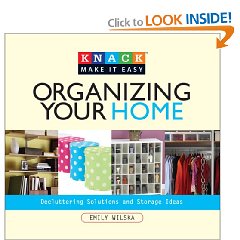
Books about home organizing is a crowded field. Emily Wilska’s book, in the new Knack series, stands out as comprehensive, beautifully written, and entertaining. She offers tons of decluttering and storage solutions. I dare anyone to read this book and not find practical and elegant ideas in every chapter.
To get a sample of Emily’s organizing philosophy and writing style, visit her blog, The Organized Life.
Best Organizing Website or Blog: Jeri’s Organizing & Decluttering News

Jeri Dansky’s blog is a treasure trove of interesting concepts, useful information, and products to suit every taste and budget. Among Jeri’s outstanding skills is the ability to find anything on the web, if it is there to be found. I have hired her to do product searches for clients who have had very specific or unusual requirements — a corner desk in a certain style with a particular filing capacity, for example. She generously shares this skill for free in her daily blog posts. Dip in and enjoy!
My best wishes to all the finalists in this year’s Organizing Awards!
Are there any products and services that you depend on to keep you organized? What would get your award for organizing excellence? Leave a comment here.
(Photos on this post are copied from the respective links given in the award category description.)
Planning: try a change of place
by Margaret Lukens, New Leaf + Company LLC
While you’re working on your plans for 2009, make use of the creative juice available by putting yourself in a new space. Here’s an exercise to accomplish it:
On a fresh sheet of paper, make a list of everything you’d like to be, do and have during 2009. Include the huge (receive a Grammy nomination) as well as the trivial (buy a new red briefcase). Write fast without over-thinking. Don’t stop until you have at least 30 things; go for 50.
Do this exercise three times — once in your office, once in a public place with hubbub such as a coffee shop or hotel lobby, and a third time in a place of nature such as a hiking trail or beach.

Gates of the Valley at sunset (Yosemite National Park, California).
Then combine your lists. Notice what turns up every time, and what came up only in a particular place.
Divide your be-do-have list into three roughly equal parts of “non-negotiables”, “really wants”, and “nice to haves”. The non-negotiables are those things that will make the coming year as worthwhile as possible.
Be careful not to over-commit. Some of your level 2 and 3 priorities will come to you anyway; being aware of them will help you achieve some of them with relatively little effort, so save your committed effort for the level 1 non-negotiables in your life.
In her book Focus: the Catalyst for Creativity (available for free if you subscribe to the author’s newsletter, here), Betsy Burroughs describes a practice she calls the “Focus Tour”. A few of her favorite alternative locations include shopping malls, museums, and public transit. My favorite among Betsy’s ideas is a one-day train trip from San Francisco to Yosemite. Work on the train, enjoy a three-hour walk in Yosemite, and arrive home in time for dinner. This one is on my be-do-have list for 2009.
What places put you in a new frame of mind? Where do you focus best? Please leave a comment here.
Announcing February’s SF coaching book
by Margaret Lukens, New Leaf + Company LLC
In October I requested recommendations for a book to share with the San Francisco coaches-and-friends book group. Several people, including authors, offered wonderful suggestions (see below for more good reads), making it excruciating to choose just one book.
But choose we must, so here it is:
If you are in the San Francisco area on Wednesday, February 18, 2009, please join the SF members of the International Coach Federation and their friends (no need to be a coach!) at Books Inc. for a discussion of Brain Rules: 12 principles for surviving and thriving at work, home and school, by John Medina.
As many of you know, brain science is a particular interest of mine, and this book, published in 2008, is one of the most accessible and interesting reviews of what the latest research can tell us about how to work WITH our brains rather than against them, for maximum productivity, joy and health. The book comes with an entertaining DVD, making use of at least two of the “brain rules”, #4: we don’t pay attention to boring things, and #10: vision trumps all other senses.
This book will provide immediate help if you:
* give a PowerPoint presentation
* parent a teenager, or a toddler
* wonder how to sell to a client
* influence an office layout
* want to learn new skills
* hope to remember things better
* and more.
Whether you have read the book or not, please join us for the discussion at Books Inc. on Van Ness Street in San Francisco this February.
And if you’re packing your suitcase with books in addition to a snowboard and gifts this month, consider adding these runners-up for the book club choice:
Being Productive, Getting More Done with Less Effort, by Chris Crouch, available later this month. Chris, sometimes referred to as the “Jack Daniels distillery of organizing” for the way he boils down and renders the best of what is known about productivity, is the author of several books on organizing. This is his newest.
Bit Literacy: productivity in the age of information and e-mail overload, by Mark Hurst. This book got votes, a testament to the need we all feel for help in managing new information technologies.
The Spiritual Art of Being Organized, by Claire Josefine. Many people yearn for a simpler and more meaningful life, free of clutter and confusion. Claire Josefine is their Lewis, their Clark, and their Sacagewea.
Fun With Filing, by Maria Parkinson. It’s about creating files (either business or personal) that last a life time and anyone can understand. Brand-new book by a first-time author.
If you can’t make it to the San Francisco group in February, please connect with the book discussion by leaving a comment here.
Update on April 3, 2009: As of this week, Brain Rules is now available in paperback.
 Leave a comment
Leave a comment



